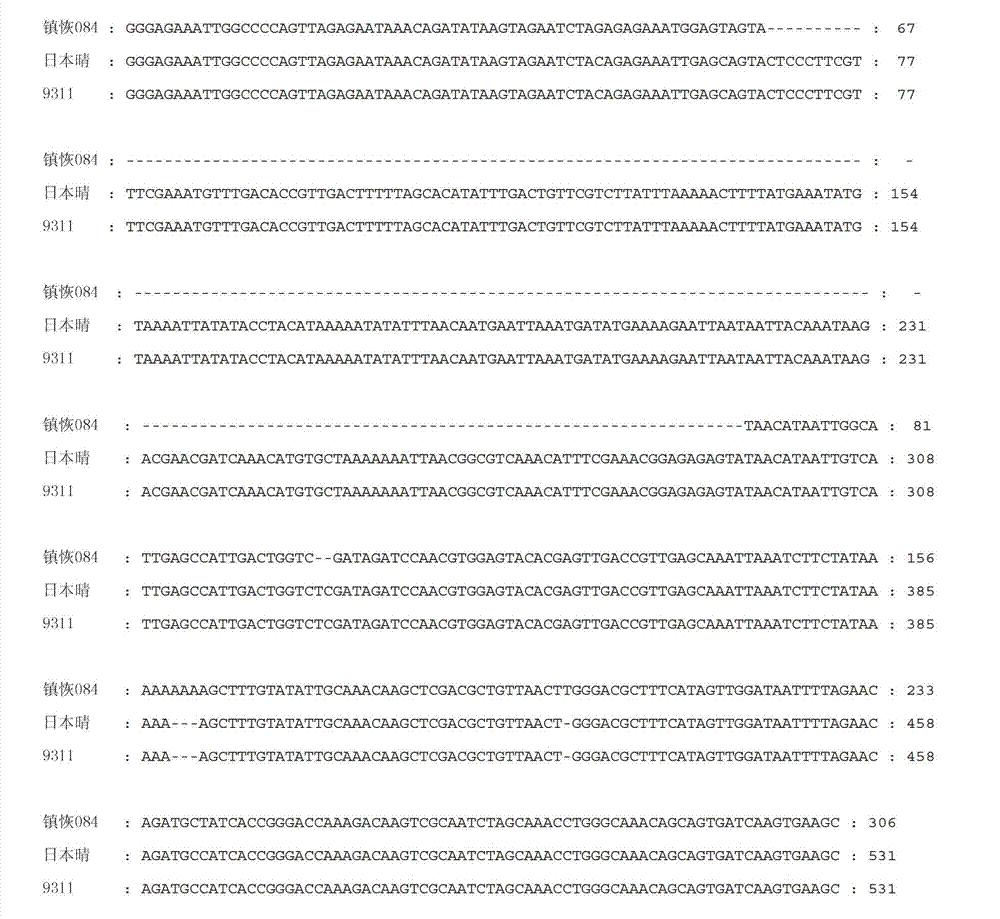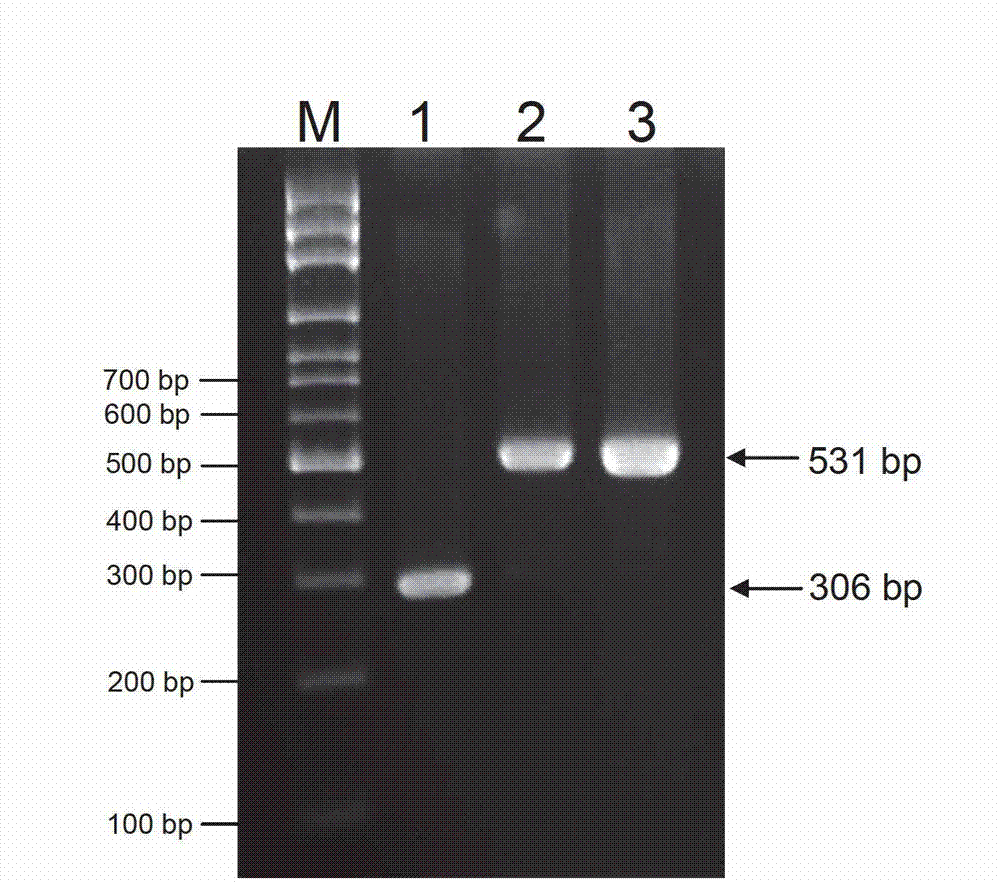STS molecular marker for identifying high rice bacterial blight resistant genes and application thereof
A technology of resistance to bacterial blight and molecular markers, applied in the field of molecular genetic breeding, can solve the problem that the Xa7 gene has not been cloned, and achieve the effects of improving breeding efficiency, good stability, and short cycle
- Summary
- Abstract
- Description
- Claims
- Application Information
AI Technical Summary
Problems solved by technology
Method used
Image
Examples
Embodiment 1
[0027] 1. Primer design: According to the Fosmid clone sequence of Zhenhui 084, a pair of PCR primers were designed at both ends of the difference sequence between Zhenhui 084 and Nipponbare genome. The sequence is
[0028] Forward primer: 5' GGGAGAAATTGGCCCCAGTTAGAGAA 3',
[0029] Reverse primer: 5' GCTTCACTTGATCACTGCTGTTTG 3'.
[0030] The primers can be synthesized by Invitrogen Company.
[0031] 2. DNA extraction: Genomic DNA is extracted from rice leaves. There are many DNA extraction methods reported, and one can be selected arbitrarily. This discovery uses a simple rice DNA extraction method reported by Chen Wenyue et al. (China Rice Science, 2005, 19: 561-563).
[0032] 3. PCR amplification: Add 20 ng of rice DNA, 0.25 μM each of forward and reverse primers, 100 μM each of 4 kinds of dNTPs (dCTP, dGTP, dATP, dTTP, 1 ×PCR Buffer, 1 enzyme activity unit of Taq DNA polymerase, dilute to 20 μl with deionized water, and mix thoroughly. The above-mentioned PCR reagents (...
Embodiment 2
[0053] Known rice varieties "Zhenshan 97, Longtefu, and Xieteqing" do not contain the Xa7 gene and are not resistant to bacterial blight PXO86. These three rice varieties were backcrossed with the bacterial blight-resistant rice variety IRBB7 (containing the Xa7 gene) several times, and the molecular markers described in the present invention were used for auxiliary selection, and the Xa7 gene was successfully transferred to this Among varieties, the resistance to bacterial blight was significantly enhanced. Taking Zhenshan 97, one of the varieties, as an example, the specific process is as follows:
[0054] The rice variety IRBB7 containing the Xa7 gene was used as the male parent and crossed with the female parent variety Zhenshan 97 to obtain F 1 Progeny and the recurrent parent Zhenshan 97 were backcrossed multiple times, and the Xa7 gene was transferred to Zhenshan 97. Since the offspring of the backcross would segregate, only a part of the individuals in the population ...
PUM
 Login to View More
Login to View More Abstract
Description
Claims
Application Information
 Login to View More
Login to View More - R&D
- Intellectual Property
- Life Sciences
- Materials
- Tech Scout
- Unparalleled Data Quality
- Higher Quality Content
- 60% Fewer Hallucinations
Browse by: Latest US Patents, China's latest patents, Technical Efficacy Thesaurus, Application Domain, Technology Topic, Popular Technical Reports.
© 2025 PatSnap. All rights reserved.Legal|Privacy policy|Modern Slavery Act Transparency Statement|Sitemap|About US| Contact US: help@patsnap.com



